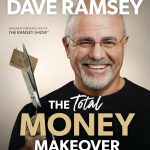
Customers say
Customers find this book to be a classic story of American history and one of the most consequential political science books. They describe it as a worthwhile and entertaining read with well-written content.
Make It Yours – See Your Price On Amazon!
Your Sales Price $20.00 - $11.69
A quick rundown of this product’s key features:
The American Political Tradition is one of the most influential and widely read historical volumes of our time. First published in 1948, its elegance, passion, and iconoclastic erudition laid the groundwork for a totally new understanding of the American past. By writing a “kind of intellectual history of the assumptions behind American politics,” Richard Hofstadter changed the way Americans understand the relationship between power and ideas in their national experience. Like only a handful of American historians before him—Frederick Jackson Turner and Charles A. Beard are examples—Hofstadter was able to articulate, in a single work, a historical vision that inspired and shaped an entire generation.
Our Top Reviews
Reviewer: David H. MacCallum
Rating: 5.0 out of 5 stars
Title: a classic of American history
Review: This marvelous series of essays on American leaders made Richard Hofstadter’s reputation as one of the most important young historians in the country during the late-1940’s. Professor Hofstadter took on this assignment at a very early age. He was only 28 years old when he started this book, now a bit of a cult classic in American history, and finished it when he was 32. In spite of his youth, he clearly had fully formed opinions on what drives American politics. Hofstadter throws new lights on American history in a series of twelve finely-drawn portraits, mostly of Presidents but one of a stern moralist, Wendell Phillips, and one of a constantly disappointed Presidential candidate, William Jennings Bryan.In each of these sketches, all masterful in their unique viewpoints and careful analytical approach, Hofstadter sees similarities that quickly bubble to the surface. In all of them, the consistent struggle is that of the conflict between differing views of economic organization. That is the prism through which Hofstadter constructs his view of American political development. In all of this, we are treated to a great ride through our nation’s history from an historian who refuses to tell the familiar story but reaches for an understanding of how opinions change over time. Jefferson, the great Virginia aristocrat, is as clear and eloquent as any of the founders in his defense of the common man, both his rights and his liberties. But of course Jefferson’s love of liberty had its clear limits: he was a lifelong slaveowner and almost assuredly the father of one of his slave’s children. Andrew Jackson struggles for the common man, dismantling the Bank of the United States, but Hofstadter reminds us that Jackson’s early days were spent defending the rights of the propertied class.John C. Calhoun is presented as the most artful defender of slavery, an institution that had, apart from its heinous and inexcusable human consequences, the effect of sharply reducing the cost of labor in cotton farming, a highly labor-intensive industry. We see the emerging clash between the North and the South as an economic argument. Curiously, Calhoun is also presented as a Unionist but he wanted a special kind of Union, one dominated by the South not the North. Here again, Hofstadter’s take on Calhoun presents him in a quite different light than the most portraits of the Great Nullifier.It is Hofstadter’s analysis of Lincoln that most arrests the attention of any student of American history. Hofstadter calls the Emancipation Proclamation not much more than a “bill of lading”. It called for emancipation not because slavery was wrong but only that the emancipation of the slaves was required for “military necessity”. Only those slaves in the disloyal Southern states were to be freed. Slaves in the loyal Border States were not touched by the Proclamation. His hesitation to fully address the moral wrongness of slavery is based on electoral politics, according to Hofstadter. The most important source of Lincoln’s electoral strength was centered in the Midwestern (then referred to as “Northwestern”) parts of the country, where voters feared that the institution of slavery, if it spread to other parts of the country, would depress wages and result in more intense competition for jobs. It was not the moral wrongness of slavery that Lincoln initially appealed to but to a more convincing economic argument. Nevertheless, Hofstadter eventually focuses on Lincoln’s slow turn to the abolition of slavery in all parts of the country. But we are left with a portrait of Lincoln, probably our greatest president, that is at times frustratingly nuanced.Hofstadter’s discussion of the emerging strand of progressivism in American politics develops slowly. The post-Civil War period was perhaps the most dynamic period of industrial development in the nation’s history. Only by the end of the nineteenth century did the voice of the common man find its full volume. William Jennings Bryan was this voice but his career never achieved its full potential. Bryan, three times the nominee of the Democratic party, failed in his most important quest: to change the monetary system of the country from one based on gold to a more accomodating system. Hofstadter’s discussion of Bryan is a sad interlude between the magnificence of Lincoln and the emergence of Theodore Roosevelt.This is perhaps the most puzzling of Hofstadter’s portraits. Roosevelt is here presented as a conservative. He opposes bills to raise the salaries of police and civil employees. He guards against the potential violence of labor strikes and urges firing live bullets at striking workers, if necessary. He enters the Presidency with no strong position on the problems caused by corporate power. In fact, as Hofstadter relates, he admits “I have let up in every case where I have had any possible excuse for doing so.” One is left with the impression, very much encouraged by Hofstadter, that Teddy was far more noise than substance. This is in stark contrast to recent biographies of Teddy; wanted to read a fuller exposition of Hofstadter’s take on Roosevelt, particularly in view of the now widely-celebrated Part Three of Edmund Morgan on Roosevelt, an expansive but ultimately hagiographic study.The final two portraits (excepting a brief piece on the immensely talented but woefully inept Herbert Hoover) are perhaps the most interesting, since they touch on issues that have emerged in the present decade.Both Woodrow Wilson and Franklin Roosevelt had clear conceptions of the use of governmental power to influence events. Wilson turned from a highly successful career as a college president to politics, almost as an afterthought. He came from an intensely conservative background, as did Roosevelt, and brought with him highly conventional views. Hofstadter traces the gradual movement of Wilson, first as a governor and then as President, towards more progressive positions, ones that infuriated business interests. He instituted the income tax, created the Federal Reserve, reduced the tariff (the first significant reduction since the Civil War), and extended control over big business with the Clayton Anti-Trust Act. Resentment against Wilson became white-hot as a result of this. This loss of trust enabled the Republican party to defeat the League of Nations treaty, a world structure that Wilson felt would be his most signal achievement. It ended badly for Wilson and Hofstadter sums it up acutely: “He said that American entrance to the war would be a world calamity, and led the nation in…He said the future… of the world depended on removing the economic causes of war, and did not attempt even to discuss these causes at the Peace Conference.” Here it is again: economics rules, according to Hofstadter.Finally, it is Franklin Roosevelt’s turn for the Hofstadter lens. Here, he is at his most critical. Not only does Roosevelt seem to be naïve and practically disinterested in economic policy but he fails miserably in restoring the American economy, lurching from one unsuccessful program to another. Only with the run-up to World War does the American economy respond to governmental intervention. By now, after eleven portraits, each of which offers a different slant on the most prominent American political figures, Hofstadter’s reservations about Roosevelt seem predictable and a bit forced. Nevertheless, Hofstadter’s overall point is well-served: the American Political Tradition is one of compromise, constant tacking to catch the wind, shifting to capture the mood of the electorate, and growth as broader perspectives become more visible.In all of this, Hofstadter seems to be saying that important questions are ultimately decided by society’s attempt to move towards a middle ground, one where the scales of opinion reach equilibrium. He does this with a series of portraits, each of which illustrate the process of political movement. Not surprisingly, economics has determined most of the important issues of our history. Hofstadter’s book is deeply satisfying and constantly interesting. It may not be the easiest read in American history but it is one of the most important.
Reviewer: David Southworth
Rating: 5.0 out of 5 stars
Title: A Masterwork of its Genre
Review: The classic story of American History, as told by Richard Hofstadter, has rightly come to be thought of as a masterpiece of American history since its original publication in 1948. This well deserved reputation comes from the rich storytelling, attention to detail, and thoughtful and complete narrative Hofstadter puts forward in this book.Hofstadter takes as his guide one figure from each generation starting from the beginning of the Republic, and through biographical sketch describes both the historical figure and the time period he is depicting. Beginning with Jefferson and including people such as Jackson, Lincoln, Teddy and Franklin Roosevelt, Hofstadter demonstrates how a combination of the great men and the times they lived in shaped what have come down to us as the leading tradition in American politics: the belief in American greatness, individualism, and compassion.The most significant contribution of this book is to show how these men, who have come down to us as legendary and nearly mythological figures were very much political animals. Just like Bill Clinton and George Bush make decisions today based on political calculation, so to do Lincoln and Jefferson. That these men were not demigods but in fact mere humans makes their achievements that much more incredible.
Reviewer: Jonathan Heimer
Rating: 4.0 out of 5 stars
Title: Want to learn American Politics, then read this book now.
Review: Richard Hofstadter wrote the best book of my Political Science education. I have read dozens and dozens of books on politics, economics, international affairs, and cultural studies, as a part of my Political Science program at my university.I want to break down two things he does well and one thing he does wrong. And a sorta mehhh in-between place.So the Good:1. It is well written and entertaining. Honestly I love politics, but so many authors on this subject matter are terribly boring or don’t really formulate a good opinion.2. It is pretty well researched, and gives you exactly what is on the title. If you are looking for a book to really ground yourself in how American political thought has changed over the last few hundred years, you will get that with this book.The Bad:Hofstadter is biased at times (not much but it shows when he is) particularly with Theodore Roosevelt. The book does a decent job of chronicling his life, but it interjects too much negativity. And is probably the worst researched section of the book. This also ties in with Franklin Roosevelt, I think he is a bit overly critical of FDR.If you want to learn about FDR and Teddy, please watch Ken Burns documentary, The Roosevelts: an Intimate HistoryThe mehhh:I do wish he had more sections on people who were not Presidents, obviously Presidents have an enormous influence on political thought, but they don’t exist in a vaccum. That being said he does do a good job at introducing key figures in each section that were vital to the time period.
Reviewer: S. Mcdowall
Rating: 5.0 out of 5 stars
Title: Revisiting an Old College Classic
Review: Not gonna try for a scholarly review here. I was no scholar when I was weed-smoking undergrad in a 201 Am History class 30-odd years ago, and I’m still not. But some of what little I remember from those days was this book, and the Maine Yankee prof who opened my Visine-soaked eyes.This is one of those books where one keeps muttering, “I should send so-and-so a copy of this…THEN he maybe he’d understand…”Hofstadter’s observations from 1948 still show up in the fractious political landscape we have today. It’s relevant, informative and entertaining. And yes, it should be required reading for anyone participating in what passes for political debate on the blogs and social media sites today.
Reviewer: Bingo
Rating: 5.0 out of 5 stars
Title:
Review: I first read this book in 1955 and was bowled over by it. This and ‘The Age of Reform’ are still ‘must read’ books on American Political History along with Howard Zinn’s ‘A People’s History of the United States’. Do yourself a favour and read them.
Reviewer: Cliente de Amazon
Rating: 5.0 out of 5 stars
Title:
Review: Compra, aprende y sé feliz…
Reviewer: lexo1941
Rating: 4.0 out of 5 stars
Title:
Review: It’s a while since I read this book, and my copy of it – which was a 50s Anchor paperback that must have been forty years old when I bought it used – has long since disintegrated, so I can’t refer to it. But it’s a much better book than the other reviewers would have us believe. Hofstadter reviews various figures in American political history and his central thesis is that, for all the rhetoric that American politicians like to use concerning freedom and liberty and so on, when it comes to property rights, the general tendency among American politicians is absolutely in favour of protecting wealth and private property, and absolutely against any attempt to regulate the distribution of wealth in the direction of protecting the poor from exploitation by the rich, not to mention being opposed to any attempt to prevent the already rich from becoming still richer. In short, Hofstadter’s analysis of the American political tradition shows that that tradition is, broadly speaking, on the right. Hofstadter is not really interested in popular movements, or organised labour, or the long tradition of the left in America, for the fairly sound reason that his book is about professional politicians and not about the broader map of American politics as a whole. It could be said that left-wing politics as such have never truly entered the ‘American political tradition’; it wasn’t so long ago that ‘liberal’ was one of the vilest terms of abuse that one American politician could hurl at another (I remember Michael Dukakis haplessly denying that he was a liberal – he wasn’t much of one, but it was still disgusting that he felt the need to deny it), and if things have got a little more sane, it’s only because the far-right of the American political mainstream has displayed itself again and again to be incompetent to hold power, most publicly in the second Bush administration. Right-wing commentators and politicans in the US claim, of course, that they are under constant attack from a massive liberal power bloc that somehow manages to be simultaneously absurd, feeble and intellectually empty and yet also menacing and immensely powerful; Hofstadter diagnosed this argument, too, as what he called the ‘paranoid style in American politics’.Hofstadter died 40 years ago, but his arguments are still sound today. His prose cuts through a lot of the sentimental guff talked about some of the major figures in American political history. I thoroughly recommend this book.
Price effective as of Apr 06, 2025 04:47:15 UTC
As an Amazon Associate Dealors may receive a commission for purchases made through these links.









